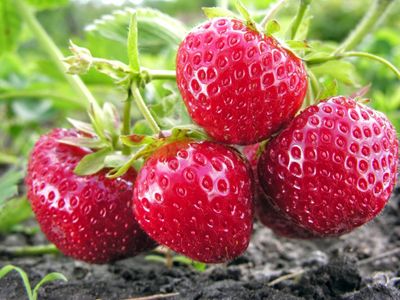What are June-Bearing Strawberries?
June-bearing strawberry plants usually only produce one vigorous crop of large, sweet juicy strawberries in spring to early summer. That being said, the plants usually produce little to no fruit in their first growing season. Because of this, gardeners usually pinch back any flowers and runners, allowing the plant to put all its energy into healthy root development in the first season. June-bearing strawberries form flower buds in late summer to early fall when day length is less than 10 hours per day. These flowers bloom in early spring, then produce an abundance of large, juicy berries in spring. When to pick June-bearing strawberries is during this two-three week period in late spring to early summer, when fruits ripen. Because June-bearing strawberry plants bloom and fruit so early in the season, fruits can be damaged or killed by late spring frosts in cooler climates. Cold frames or row covers can help prevent frost damage. Many gardeners in cooler climates will grow both everbearing and June-bearing plants to ensure that they will have harvestable fruit. June-bearing plants are more heat tolerant than everbearing strawberries, though, so they tend to do better in climates with hot summers.
How to Grow June-Bearing Strawberry Plants
June-bearing strawberries are usually planted in rows that are 4 feet (1 m.) apart, with each plant spaced 18 inches (45.5 cm.) apart. Straw mulch is placed under and around plants to keep the fruits from touching the soil, to retain soil moisture, and to keep weeds down. Strawberry plants require about an inch (2.5 cm.) of water per week during the growing season. During flower and fruit production, June-bearing strawberry plants should be fertilized every two weeks with a 10-10-10 fertilizer for fruits and vegetables, or a slow-release fertilizer can be applied early in spring. Some popular varieties of June-bearing strawberries are:
Earligrow Annapolis Honeoye Delmarvel Seneca Jewel Kent Allstar
